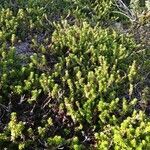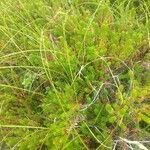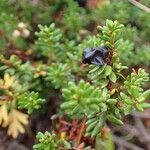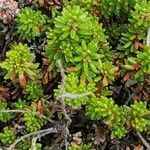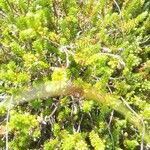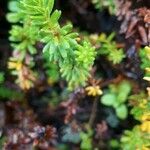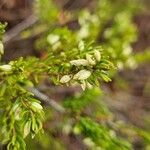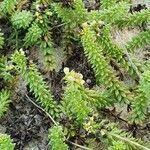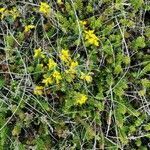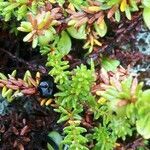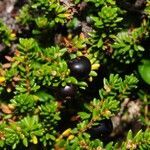Branches green, brown, or reddish, distally glabrous, eglandular or glandular, sparsely white-tomentose. Leaves divergent, becoming reflexed; blade 2.5-7 mm. Flowers unisexual or bisexual (plants synoecious, sometimes polygamous, or dioecious); sepals greenish pink becoming reddish purple. Drupes black, opaque, 5-10 mm diam. Seeds light brown, 1.5-3 mm. 2n = 26, 39, 52.
A spreading heath like shrub. It grows 30 cm high. It spreads 38 cm wide. The branches hang down and are trailing. The stems have long woolly hairs. The leaves are short and needle-like. They are 6 mm long. The flowers are small and red and in clusters. The fruit are purple or black. They are 8 mm long. The fruit are edible.
